A new era has started for the Toronto Maple Leafs with the announcement that Lou Lamoriello wouldn’t be returning as general manager. When Lamoriello was brought on as the new general manager in the summer of 2015 it was to help steer the franchise in the direction of success. This was done by clearing a mountain of unwanted contracts and getting future assets and draft picks in return. He also made significant trades and contract signings that will shape the future of the team for years to come.
Shanahan says the original agreement three years ago was for Lamoriello to be GM three years and then transition for senior advisor for four years… The Leafs president stuck to that agreement.
— Pierre LeBrun (@PierreVLeBrun) April 30, 2018
His arrival also brought a significant culture change for the team that was prevalent through all levels of the organization. Some of that was with the infamous “no facial hair rule” or even by clamping down on any trade or contract leaks from the organization. But it was clear that the now 75-year-old Lamoriello wasn’t the future for the team and that he was a stopgap until Kyle Dubas was ready to take over the position.
Lou Lamoriello on Kyle Dubas from July 23, 2015 — the day he was hired by the #leafs. pic.twitter.com/1YuRoT0p84
— Chris Johnston (@reporterchris) April 30, 2018
Well, with Lamoriello’s three-year contract with the team expiring, it’s time to move onto the future of the Maple Leafs with Dubas having been announced as the new general manager.
But before we are quick to look to the future of the team, it’s important to look at how the Leafs got to where they are and how much of an impact Lamoriello’s had on the team.
Trading Away the Past
The rebuild had already started by the time Lamoriello got to Toronto, but his arrival sped up the process. The 2015-16 season was spent clearing out as much of the team as possible, including excess AHL players. One could argue that this was one of the reasons why the Maple Leafs were able to finish last and have the best chance of drafting Auston Matthews, which they did.
The Rebuild
The first major trade that Lamoriello pulled was acquiring Michael Grabner of the New York Islanders for five AHL players. Grabner ended up having the worst season of his career despite being given every opportunity to succeed, but the trade was more about clearing up contract spots as opposed to getting a significant player in return.
The next trade was the blockbuster Dion Phaneuf trade. This wasn’t a blockbuster because of the star power, but because of the number of players traded in the deal. There were nine players involved in the deal as well as a 2017 second-round draft pick going to the Leafs.
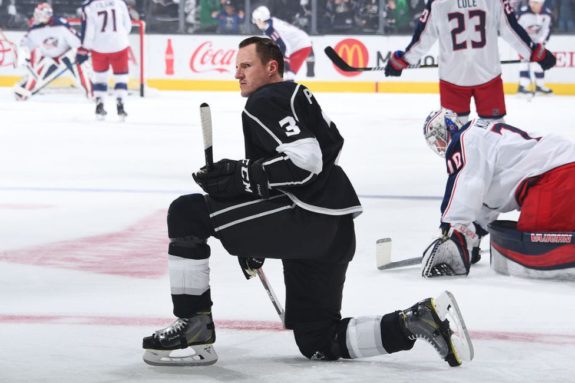
The Maple Leafs did get some use out of Colin Greening, who is still with the organization down in the minors, and Milan Michalek, but the main point of the trade was getting rid of Phaneuf’s massive contract and in exchange take on a few overpaid players on short-term contracts.
Both of those deals gave the Maple Leafs wiggle room in terms of cap space with Phaneuf no longer on the books, as he still has three years left at $7 million a season, and in terms of freeing up contract space.
The rest of the trades that season involved getting draft picks with the most notable being the two deadline trades that sent Roman Polak, James Reimer and two other players to the San Jose Sharks and netted the Leafs a 2017 and 2018 second-round draft pick, a conditional pick and three other players.
Lamoriello’s fondness for second-round picks continued with the trade that sent Daniel Winnik and a late draft pick to the Washington Capitals in exchange for Connor Carrick, a 2016 second-round pick and Brooks Laich in return.
Last Place to Playoff Contender
Nobody expected the 2016-17 Maple Leafs to make the playoffs. They had just finished last in the NHL and their roster was flooded with young talent, so expectations were low despite the future looking promising.
Lamoriello’s best trade as general manager of the Maple Leafs happened at the 2016 NHL draft when the Leafs sent a 2016 first-round pick and a 2017 second-round pick to the Anaheim Ducks for Frederik Andersen.
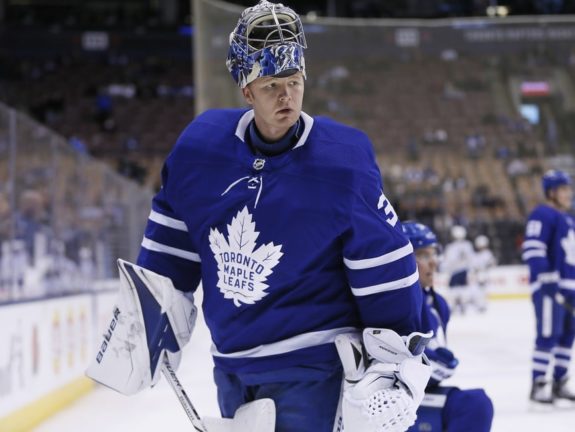
They immediately signed him, which was initially a concern for some, but Andersen has been their best player since he joined the team. He has been a key reason the Maple Leafs have made the playoffs for the last two seasons and has even broken the franchise record for wins by a goalie in a single season.
The rest of the trades have been relatively minor deals with the only other standout deals being for Brian Boyle in the 2016-17 season and Tomas Plekanec in the 2017-18 season. In hindsight, these weren’t the best trades considering the Maple Leafs gave up second-round picks in each trade to then get eliminated in the first round of the playoffs.
Although both players helped the team, it seemed odd to be upgrading the fourth-line center position late in the season and for no small price. What would’ve really helped the Maple Leafs was adding to their underwhelming defensive group, but that’s now a problem for Dubas to deal with as general manager.
Signing on to the Future
The other major aspect of being a general manager is negotiating contracts, and this is where Lamoriello’s experience shines. Heading into the 2016-17 season, Lamoriello had to negotiate three important contracts for the Maple Leafs in Andersen, Morgan Rielly and Nazem Kadri.
Lamoriello Steals the Deal
People were initially wary of Lamoriello’s decision to sign Andersen to a five-year contract worth $5 million a season without having played a single game in the blue and white. Things looked rocky to start as it took Andersen a month to get it together with his new team, but since then he’s been the best player on the team and makes his contract look like a steal compared to the salary of other elite starting goalies.
Since Mike Babcock came on as coach of the Maple Leafs, he’s chosen a player to be his pet project each season by putting them in demanding situations which makes them better players in the long-run. In the 2015-16 season, it was Kadri who was chosen, and he struggled as a result of Babcock forcing him to improve his defensive game.
In the offseason, they signed Kadri to a six-year deal worth $4.5 million a season and since then he’s had career highs in points and back-to-back 32-goal seasons.
At the same time, they signed Rielly to a six-year deal worth $5 million a season. He was Babcock’s next project in the 2016-17 season, where he gave Rielly big minutes and lots of time on the penalty kill while limiting his power play time.
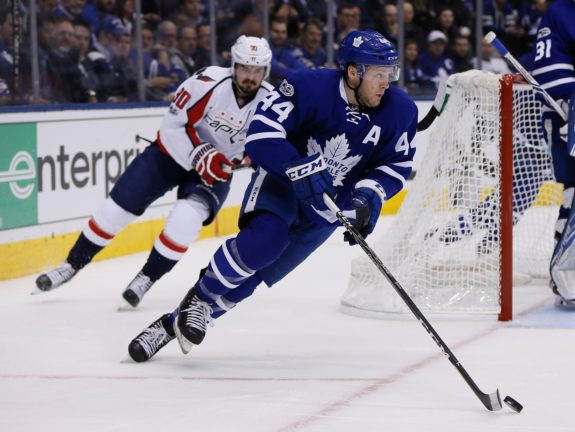
That work paid off this season as Rielly has stepped up his game to be a legitimate top-pairing defenseman in the NHL. He also set a career high in points with 52 points in 76 games this season.
Luckily, management had the foresight to see that both would be breakout players after working to improve their play.
Lamoriello’s Contract Blunders
For every fantastic deal, there are always ones that were bad from the start and ones that just haven’t worked out as expected. With this, there are two contracts that come to mind in Matt Martin and Nikita Zaitsev.
Martin has played well for the Maple Leafs in his fourth-line role and it’s obvious that he’s a big influence on the Leafs young players. The problem is that he just can’t keep up with the rest of the team and has slid down the depth chart. He went from being a player that Babcock had to have in the lineup every night to being scratched for the last half of the season.
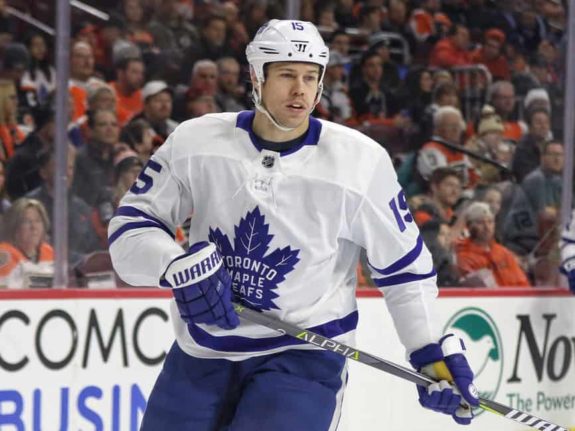
Now, this normally wouldn’t be a problem, except that Martin was signed to a four-year contract worth $2.5 million a season. With two years left on his deal, it’s unclear whether Martin’s played his last game for the Maple Leafs and if they will be able to move him. He’s not a bad player, but $2.5 million for a fourth-line winger is an overpayment on any team.
Zaitsev is a player that you’d hope would regain his level of play that earned him a seven-year contract worth $4.5 million annually after just one season in the NHL. He struggled heavily this season and it’s becoming worrying that Zaitsev isn’t the top-four defenseman we thought he was, and that the Leafs will be stuck with him until 2024.
The other notable contract that looks concerning is Patrick Marleau’s, with $6.25 million annually for three years. Marleau was the first major free agent signing the Maple Leafs had made in years and he has continued to play well and keep pace with the Leafs young players, even at his old age.
I had previously broken down Marleau’s contract and why it’s not actually something to be worried about. The short version is that he’s overpaid, but the contract is structured in a way that makes it easy for the Maple Leafs to trade him heading into his last year of the contract.
Lamoriello’s Legacy
After three years as general manager of the Maple Leafs, it’s time for Lamoriello to move on. His legacy will be visible throughout the organization for years to come with the trades he made and the contracts he signed.
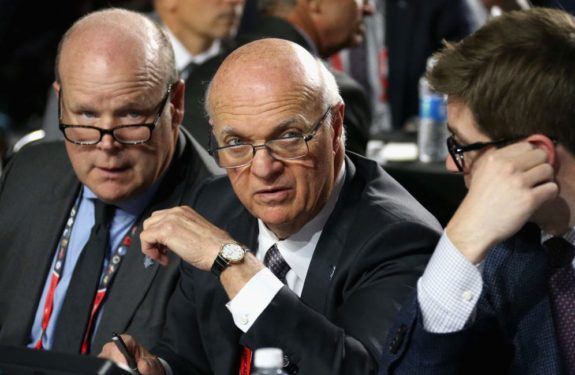
All of his trades helped put the Maple Leafs in the position to improve with draft picks, by moving bad contracts and by bringing in Andersen. The contracts that he signed with the trio of Andersen, Rielly and Kadri are fantastic given how well they’ve all played, and, by locking them up for years, it gives the Leafs extra cap room to work with when you realize that they should all be making much more when compared to similar players.
There are plenty of trades and contracts that weren’t mentioned, but these were all the ones that will stay with the team for years, for better or worse. And after looking at all the major moves Lamoriello made in his short time on the job, it’s clear that his legacy will be as the person who shaped the Maple Leafs success for years to come.